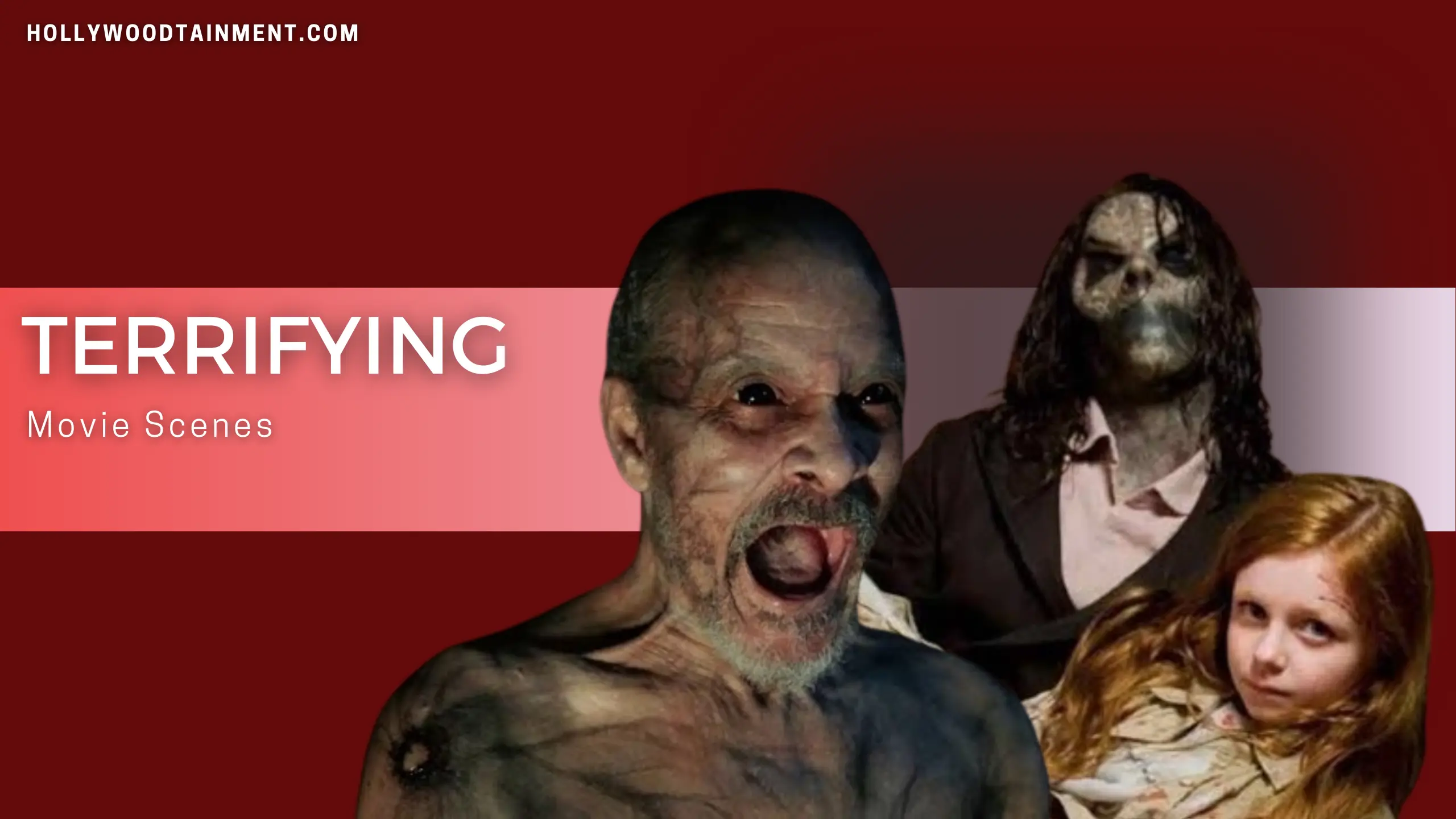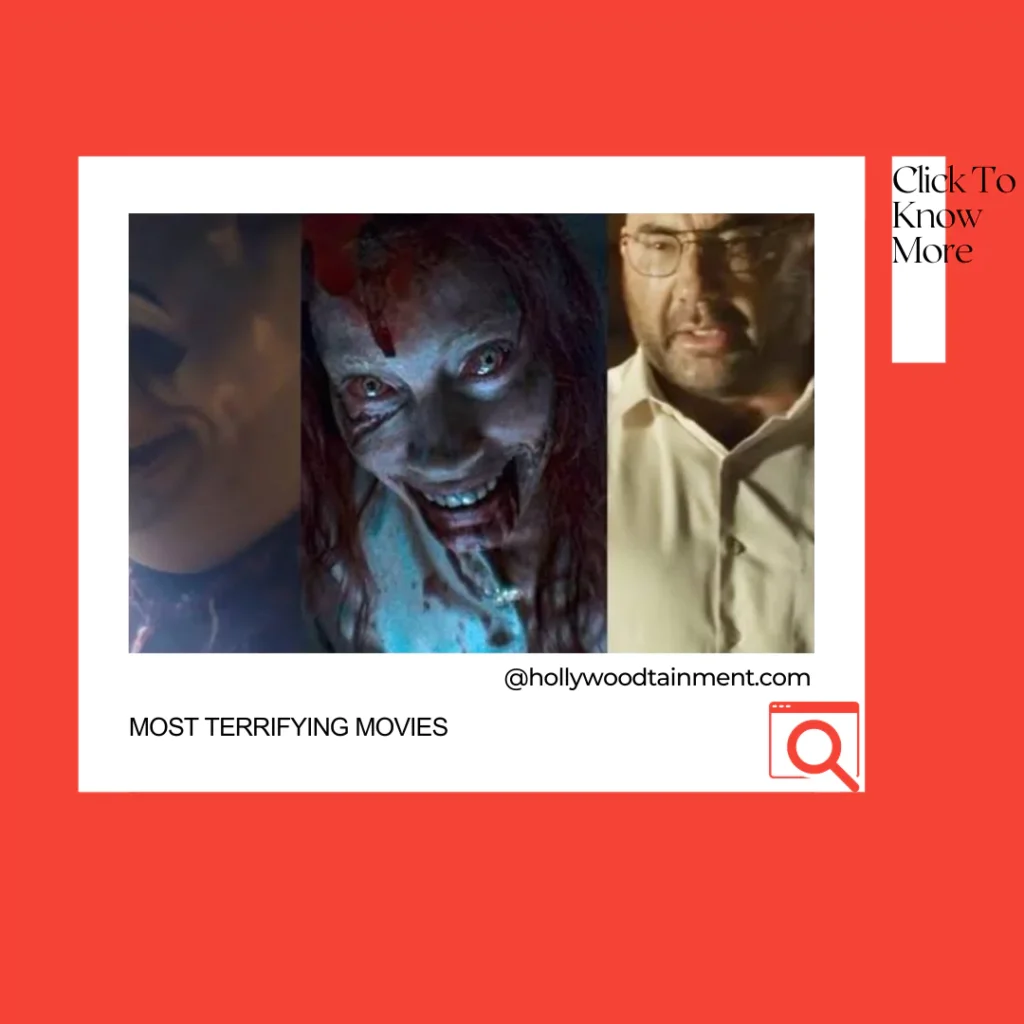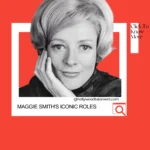In the world of cinema, certain scenes transcend mere entertainment to etch themselves into our collective psyche as truly terrifying moments. Whether through masterful direction, cruel performances, or creative use of cinematography, these scenes have left audiences panting in fear and shock. Join us as we delve deep into the top 10 most terrifying movie scenes ever captured on screen.

You can also check out other Movies and Web Series or scroll through our latest trends.
1. Psycho (1960) – The Shower Scene
No list of terrifying movie scenes would be complete without Alfred Hitchcock’s masterpiece, “Psycho”. This seminal film reconsidered the horror genre and set a new standard for suspense and psychological terror.
The infamous shower scene, where Marion Crane meets her untimely collapse at the hands of the mysterious figure wielding a knife, remains one of the most iconic and terrifying moments in cinematic history.
Hitchcock’s cautious attention to detail, from the harsh editing to Bernard Herrmann’s shouting ability in the score, builds an unbearable tension that ends in a shocking act of violence.
The rapid cuts between extreme close-ups, the piercing sound of the knife slashing through the air, and Janet Leigh’s innate screams combine to create an intuitive experience that continues to haunt viewers decades after its release.
2. The Exorcist (1973) – Regan’s Demon Face
William Friedkin’s “The Exorcist” is a remarkable achievement in horror filmmaking, pushing boundaries and shocking audiences by characterizing demonic possession.
At the heart of its terror lies the transformation of young Regan MacNeil, portrayed by Linda Blair, from an innocent girl to a vessel for an ancient evil.
The scene where Regan’s face contorts into a strange mask of demonic fury has become a lasting image of horror cinema.
Through the groundbreaking use of special effects makeup by Dick Smith and Blair’s haunting performance, Friedkin crafts a moment of pure dread that taps into ancient fears of the unknown and the supernatural.
The simple reality of Regan’s transformation, coupled with the psychological torture exposed upon her and those around her, cements “The Exorcist” as a chilling exploration of faith, fear, and the battle between good and evil.
3. Jaws (1975) – Opening Scene
The film opens with a peaceful night-time swim against the warning darkness hidden beneath the waves.
Susan Backlinie plays the unsuspecting swimmer Chrissie Watkins, who becomes the first victim of the unseen terror that stalks the waters off Amity Island.
Spielberg’s masterful use of suspense and minimalist cinematography, coupled with John Williams’ iconic score—a simple yet chilling concept played on a lone double bass—creates an atmosphere of mounting alarm.
The sudden, brutal attack on Chrissie, depicted through her desperate struggles and the shark’s primal savagery, establishes “Jaws” as a thriller that taps into primal fears of vulnerability and the unknown horrors hiding just below the surface.
4. The Shining (1980) – “Here’s Johnny!”
At its heart is the gradual discovery of Jack Torrance, portrayed with manic intensity by Jack Nicholson, as he breaks down in response to the Overlook Hotel’s evil influence.
The iconic “Here’s Johnny!” covers the film’s slide into psychological horror as Jack, wielding an axe, breaks through the bathroom door to confront his terrified wife, Wendy, played by Shelley Duvall.
Nicholson’s disturbed performance, Kubrick’s accurate framing, and the use of Steadicam technology create a cramped and alarming atmosphere.
The scene’s intensity builds to an escalation as Jack’s insane laughter and Wendy’s horrified screams echo through the empty corridors, leaving viewers on the edge of their seats and questioning the boundaries between reality and madness.
5. Alien (1979) – Chestburster Scene
The chest-burster scene remains a milestone moment in cinematic history—a shocking eruption of body horror and existential fear.
Set aboard the Nostromo spacecraft, the scene unfolds as the crew gathers for a seemingly routine meal.
Suddenly, John Hurt’s character, Kane, falls into the attack, his chest bursting open in a spray of blood and insides as the newborn alien emerges.
Scott’s accurate direction, combined with H.R. Giger’s frightening creature design and the actors’ genuine reactions of horror and hatred, creates a moment of pure cinematic terror.
The scene’s graphic description of the biological attack and the fragility of human flesh vibrates with themes of destruction and the unknown, seal “Alien” as a timeless exploration of cosmic horror and humanity’s inconsequence in the face of an indifferent universe.
6. Hereditary (2018) – Car Accident Scene
Ari Aster’s “Hereditary” has garnered acclaim for its courageous portrayal of grief, trauma, and the supernatural.
At the heart of its terror is the destructive car accident scene—an unexpected and disturbing moment that completely changes the lives of the film’s characters.
The scene unfolds with the Graham family returning home from a traumatic event, their emotions raw and tensions boiling beneath the surface.
In a sudden and brutal twist of fate, tragedy strikes with shocking speed and brutality.
Aster’s slow-burn approach to horror, Pawel Pogorzelski’s haunting cinematography, and the actors’ raw, inborn performances create an atmosphere of unbearable tension and heart-wrenching sorrow.
The scene’s impact echoes throughout the film, serving as a catalyst for the family’s descent into madness and the unravelling of dark genetic secrets.
“Hereditary” stands as a testament to Aster’s ability to create deep emotional and psychological responses, challenging viewers to confront their deepest fears and the fragility of human existence.
7. The Ring (2002) – Well Scene
Gore Verbinski’s adaptation of the Japanese horror film “Ringu” introduced Western audiences to the creepy terror of Sadako, an implacable spirit whose curse is spread through a cursed videotape.
The well scene is central to the film’s chilling atmosphere—a haunting moment of supernatural horror drifts in the mind long after the credits roll.
As journalist Rachel Keller, played by Naomi Watts, investigates the mysterious deaths linked to the cursed videotape, she uncovers the dark secret of a young girl named Samara.
The scene unfolds in an abandoned well, where Samara’s ghostly figure emerges from the darkness with her hair confusing her face—a chilling expression of unresolved trauma and ghostly revenge.
Verbinski’s atmospheric direction and Henning Lohner and Martin Tillman’s haunting score create a sense of fear that fills every frame.
The well scene’s blend of psychological tension and supernatural terror underscores “The Ring” as a modern classic of horror cinema, exploring themes of guilt, mortality, and the consequences of disturbing the restless dead.
8. The Sixth Sense (1999) – “I See Dead People”
M. Night Shyamalan’s “The Sixth Sense” captivated audiences with its supernatural mystery and disturbing exploration of life, death, and the afterlife.
At the heart of its chilling narrative is the iconic revelation scene, in which young Cole Sear, portrayed with haunting vulnerability by Haley Joel Osment, reveals to child psychologist Dr Malcolm Crowe, played by Bruce Willis: “I see dead people.”
The discovery unfolds with quiet intensity as Cole recounts his ability to see and interact with the spirits of the deceased who walk among the living, unaware of their deaths.
Shyamalan’s indirect direction and Osment’s poignant delivery diffuse the scene with melancholy and existential fear, challenging common notions of reality and perception.
The announcement’s impact echoes throughout the film, reshaping the narrative and expanding its exploration of loss, grief, and the supernatural.
“The Sixth Sense” represents Shyamalan’s storytelling skill and ability to evolve deep emotional and psychological responses. Its thought-provoking themes and unexpected twists leave audiences haunted.
9. IT (2017) – Georgie’s Encounter with Pennywise
Georgie’s encounter with Pennywise in the sewer is at the heart of its chilling narrative—a haunting moment that sets the stage for the film’s supernatural horrors.
The scene unfolds with innocent curiosity as Georgie, portrayed with wide-eyed innocence by Jackson Robert Scott, chases a paper boat into the storm drain.
There, he encounters Pennywise, played with chilling hatred by Bill Skarsgård, who baits the young boy with promises of fun and games before revealing his proper monstrous form.
Muschietti’s atmospheric direction, Chung-hoon Chung’s scary cinematography, and Skarsgård’s unsettling performance create an atmosphere of mounting terrifying and particular fear.
Georgie’s desperate struggle against Pennywise’s otherworldly power resonates with themes of childhood innocence corrupted by evil forces and the loss of youthful naivety in the face of unspeakable horror.
The sewer scene’s blend of terror and tragedy underscores “IT” as a modern horror classic that resonates with audiences, tapping into primal fears and the enduring attraction of Stephen King’s nightmarish imagination.
Conclusion
These terrifying movie scenes are more than mere moments of fright—they are cinematic milestones that have shaped the horror genre and left a lasting mark on audiences worldwide.
From Hitchcock’s psychological suspense to modern directors’ mastery of atmosphere and tension, these scenes evolve fear, fascination, and a lasting sense of unease long after the credits roll.
As we continue to explore the depths of cinematic terror, these scenes remind us of storytelling’s power to elicit primal emotions and challenge our perceptions of fear.
These scenes tap into universal fears and anxieties through supernatural entities, psychological pain, or habitual horror, leaving viewers haunted by their unforgettable images and narratives.
As filmmakers continue to push the boundaries of horror cinema, these iconic scenes serve as a testament to the enduring power of fear and the artistry of those who dare to explore its darkest depths on the silver screen.
What is the scariest movie ever made?
“The Exorcist” and “The Shining”.
What is the most iconic horror movie villain?
Iconic horror villains include Freddy Krueger, Jason Voorhees, and Hannibal Lecter.
What makes a movie scene truly terrifying?
A combination of factors contributes to a terrifying scene: suspenseful build-up, unexpected twists, psychological impact, and effective use of sound and visuals.







